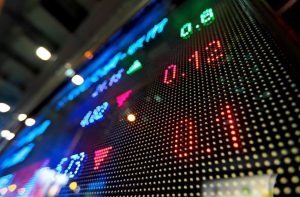Baker Hughes Company (NASDAQ:BKR) finished Thursday with a subtraction of -$0.23 to close at $35.23, a downside of -0.65 percent. An average of 4,269,200 shares of common stock have been traded in the last five days. There was a gain of $0.36 in the past week, and it reached a new high 27 times over the past 12 months. The last 20 days have seen an average of 5,098,700 shares traded, while the 50-day average volume stands at 6,929,792.
BKR stock has decreased by -0.84% in the last month. The company shares reached their 1-month lowest point of $34.45 on 07/27/23. With the stock rallying to its 52-week high on 08/09/23, shares of the company touched a low of $20.42 and a high of $36.48 in 52 weeks. It has reached a new high 21 times so far this year and achieved 19.30% or $5.70 in price. In spite of this, the price is down -3.43% from the 52-week high.
Insider Transactions
BKR stock investors should be aware that Baker Hughes Company (BKR) stock had its last reported insider trading activity 17 days ago on Aug 08. In this transaction, the insider spent $4,263,000. Chairman, President and CEO, Simonelli Lorenzo, disposed of 122,500 shares at a price of $35.49 on Aug 01. The insider now owns more than $4,347,525 worth of shares. Prior to that, EVP, Oilfield Services & Equip BORRAS MARIA C went on to Sale 10,000 shares at $35.49 each on Aug 01. An amount of $354,900 was transacted.
Valuation Metrics
Baker Hughes Company (BKR) has a trailing price-to-earnings (P/E) ratio of 31.04. The stock’s beta is 1.51. Other valuation ratios to consider include the trailing price-to-sales (P/S) ratio at 1.51, the price-to-book (PB) ratio at 2.35, and the price-to-cash flow ratio at 20.30.
The company has a payout ratio of 65.70%. The company’s most recent quarterly dividend payment was $0.20 a share, representing a up of 5.26% from $0.19 last year. Its latest increase dividend $0.01 reported on Thursday July 27 2023.
Financial Health
The quick ratio of Baker Hughes Company for the three months ended June 29 was 0.90, and the current ratio was 1.30, indicating that the company is not able to meet its debt obligations. Further, the company has a long term debt to equity ratio of 0.39 and a total debt to equity ratio of 0.44 for the quarter ending June 29. Baker Hughes Company’s EBITDA margin for the year ending June 29 is 13.78%, while its operating margin for the same period stands at 8.00%. Its gross profit as reported stood at $4.4 billion compared to revenue of $21.16 billion.
Earnings Surprise
For the three-month period that ended June 29, Baker Hughes Company had $5.85 billion in total debt. In the quarter under review, the net income was up than the previous quarter. The company posted a net income of $410.0 million in the quarter, while revenues were grew 304.63%. The analyst consensus anticipated Baker Hughes Company’s latest quarter earnings to come in at $0.33 per share, but it turned out to be $0.39, a 18.20% surprise. For the quarter, EBITDA amounted to $790.0 million. Shareholders own equity worth $1.01 billion.
Technical Picture
From a technical analysis perspective, let’s take a brief look at Baker Hughes Company (BKR) price momentum. RSI 9-day as of the close on 24 August was 50.64%, suggesting the stock is Neutral, with historical volatility in this time frame at 9.93%.
As of today, BKR’s price is $35.24 +1.03% or $0.36 from its 5-day moving average. BKR is currently trading +1.64% higher than its 20-day SMA and +22.07% higher than its 100-day SMA. However, the stock’s current price level is +16.77% above the SMA50 and +21.02% above the SMA200.
The stochastic %K and %D were 38.97% and 35.78%, respectively, and the average true range (ATR) was 0.71. With the 14-day stochastic at 35.90% and the average true range at 0.73, the RSI (14) stands at 54.62%. The stock has reached 0.13 on the 9-day MACD Oscillator while the 14-day reading was at -0.04.









